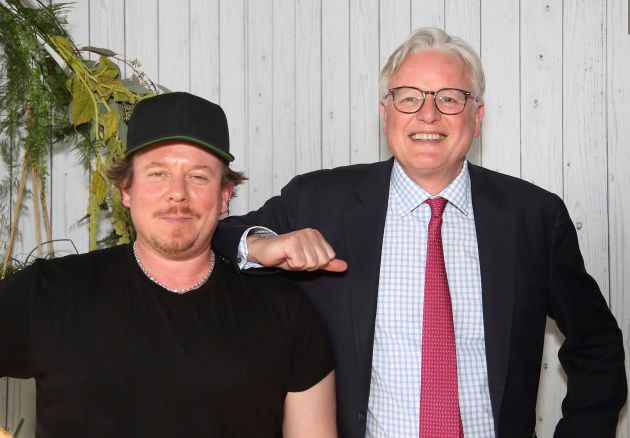
Australia’s search for ‘future icons’
Australia’s new generation of icon wines will reflect a growing confidence in listening to the Aussie palate, drawing on tradition to inform the avant-garde.
This was one of the key messages at a Future Icons seminar hosted by Andrew Caillard MW and Mike Bennie at Tuesday’s Australian Wine Made Our Way tasting in London.
The session opened with Wine Australia’s regional director Laura Jewell MW posing the question, “who is producing the wines of the future, perhaps those just outside of Langton’s Classification?”
Caillard, who co-founded fine wine auctioneer Langton’s and the associated benchmark classification of Australia’s traditional icons, was joined by Bennie, critic and champion of the eclectic and contemporary, to debate the answer over a flight of wines highlighting both archly traditional and wholly modern contenders for ‘icon’ status.
What was clear is how far and how fast Australia has evolved in terms of the styles, varieties and regions that are now jostling for pole position.
And the reason for this evolution, Caillard and Bennie agreed, is that producers are listening ever more to both their highly wine literate domestic consumers and the individuality of any given vineyard’s climate and soil.
“We are finding our own ‘cultural vernacular’, finding wines that suit the palate of Australia – we are at a changing point, we need wines for our own lifestyle,” said Bennie,
In practise, Caillard expanded, this increasingly means delivering wines that sit well with a cuisine that takes Mediterranean and Asian ingredients in its stride, while reflecting a relaxed, sunny, healthy, seafood-led outdoors lifestyle
“Wine is cool in Australia, there is a lot of status signalling around wine, posting pictures on social media… there is sizzling interest in what is going on in the Australian wine scene at the moment,” said Caillard.
With this base of interested consumers behind them, seeking out and celebrating the new, the original and the avant-garde, producers have a renewed confidence – along with an all-important thirsty and growing market – for wines that step outside of the traditional mainstream.
In a “shifting conversation”, single variety wines are “being usurped by wines with a new identity”, with recognition of the characteristics of regions and acceptance of blends.
Sitting alongside classics such as Tyrrell’s Johnno’s Basket Pressed Hunter Valley Semillon 2013 and Best’s Great Western Old Vine Pinot Muenier 2017, were ‘alternative’ high-end challengers such as the orange Ruggabellus Sallio Barossa Semillon/Riesling 2017, Luke Lambert Yarra Valley Nebbiolo 2016, Yangarra High Sands McLaren Vale Grenache 2013 and a (stratospherically-priced) Cloudburst Margaret River Cabernet Sauvignon/Malbec 2014.
The latter, while not necessarily bucking the trend with regard to variety and origin, had been included by Caillard as an example of how a boutique winery is asking – and achieving - prices of up to AU$500.
“[The Cloudburst] has helped correct the expectation of price for quality wines in the region – an emphatic statement about fine wine making and confidence in Australian winemaking,” said Caillard.
“What is fascinating right now is winemakers trying to push the prices up and create new [icons wines], but there are always consumers there to push back if the wines don’t have authenticity,” he added.
Caillard and Bennie singled out McLaren Vale as an example of a region in flux, with the sheer number of modern ‘alternative’ styles emerging, including a wealth of Italian, Spanish, Portuguese and (increasingly) Greek varieties, having already completely changed the viticultural landscape – along with expectations of where this once stalwart producers of Shiraz, Cabernet and Chardonnay can excel.
Caillard had begun the session by talking about Australia’s long winemaking heritage, and how the colonial forefathers had believed they could create wines to match the best of France and the Old World.
Having strayed away from that aim, with international varieties and wines focused on consumer tastes in far away markets, it now seems that Australia’s winemaking scene is turning full circle.
Rather as the French have long done, Australians are increasingly focussing on the best combinations of variety and local identity, producing wines to suit the domestic palate and home-grown cuisine. And the results are increasingly shaking up perceptions of what constitutes an iconic Australian wine.
Keywords:
- wine
- Australia
- Wine Australia
- alternative varieties
- seminar
- Langton's Classification
- icon wine
- Andrew Caillard MW
- Mike Bennie
- Future Icons




